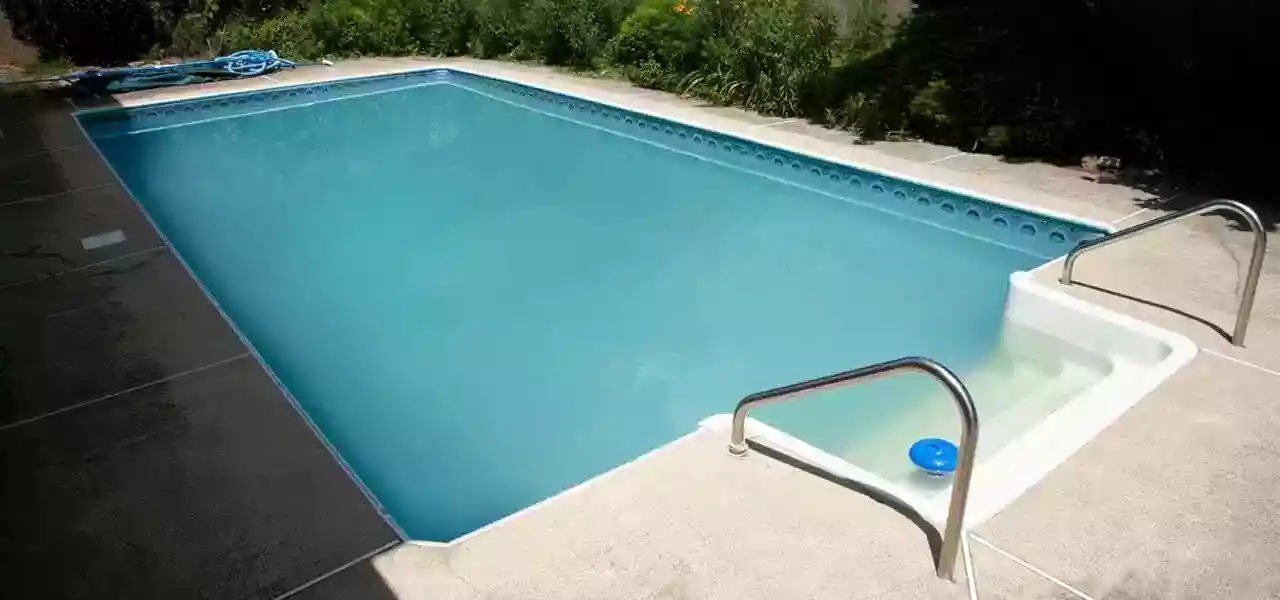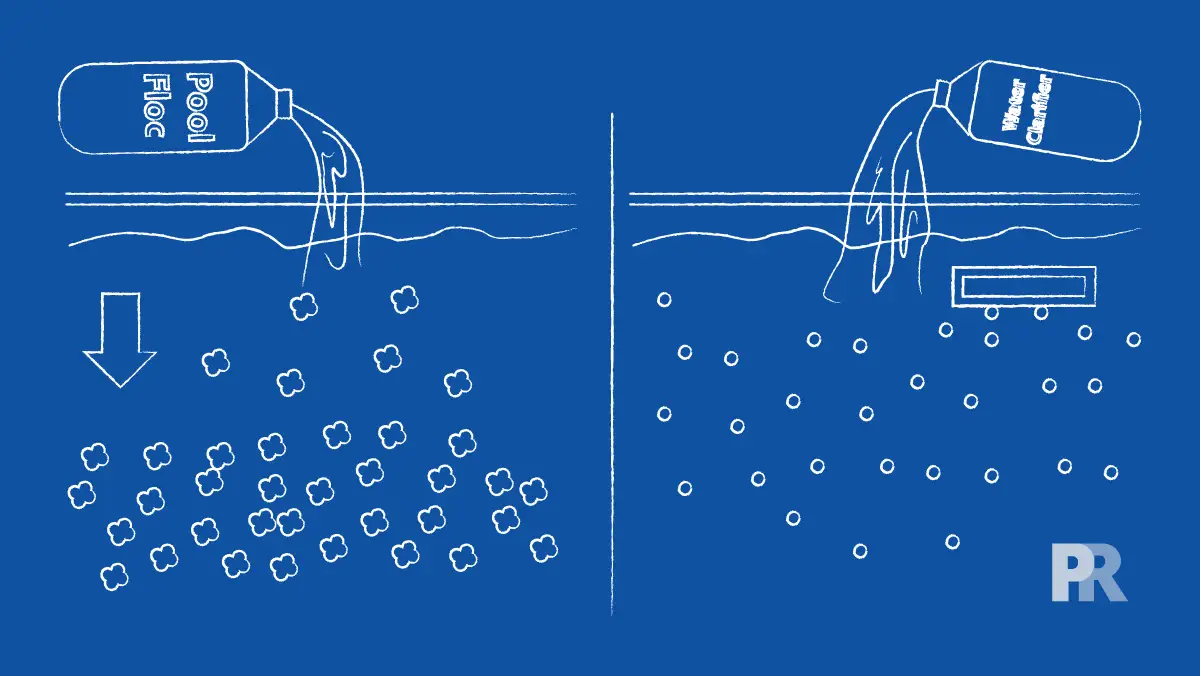With warm temperatures coming taking care of pool water becomes more of a challenge even if you do everything right chances are your pool will turn cloudy or even green with algae after a long hot weekend of several days of rainstorms. Clarifiers can keep pool water clear. When should I use a pool flocculant?
Use a pool flocculant:
- During severe cloudiness(suspended particles too small for the filter to capture)
- After algae blooms
- After heavy pool use in the summer months (pool party)
- Following rainstorms
- Removing metal stains(iron or copper)
- High TDS or murky levels
- Post-construction
- Special events prep
Pool flocculant settles bigger suspended particles, dead algae, and non-living organic contaminants and by breaking the surface tension of the pool water, these particles settle on the pool bottom allowing them to be vacuumed around the filter media and out to waste.
When Should I Use Pool Flocculant
Flocculant chemicals are a great way to clear up your pool quickly, but you should only use a Floc pool chemical when you have some extra time to slowly vacuum well after it has clumped everything together.
A clarifier clumps the particles together so that a sand filter can pick them up and clear them from pool water. This takes a bit longer to get the pool clear but will work given the right dosage usually following the shock process. During summer months you should be Super-Chlorinating and then adding a Clarifier to help the filtering process.

A Flocculant will clump the particles into larger clumps and sink them to the bottom to be vacuumed up. You should vac to waste if a floc is what you used as it will clog your filter. The clumps can break up, so we’d recommend vacuuming very slowly to not break them up.
If your swimming pool is just a little cloudy, I recommend using a pool clarifier first to see if that does the trick. With a clarifier, you can still swim while it’s working, but you will probably have to wait longer, maybe a few days to see the results.
The cloudiness is likely the dead algae you’ve managed to kill with shock treatments. If you’re alkalinity and pH are where they need to be you should be able to effectively maintain Chlorine and the Flocculant chemicals should be successful.
Even shock chlorine will cloud up your pool water with inert ingredients and fillers that are added to the best-quality pool product. After shocking adding a Clarifier should be all you need after a weekly summer shock. A flocculant should be used only when the balance and control are lost because of
- pool usage
- rain storms
- heat
- chemical imbalance issues
- lack of maintenance issues
- bad pool chemicals
A pool flocculant is a chemical that helps to remove small particles from pool water, these particles can include dirt, debris, algae, and bacteria. Flocculants work by clumping these particles together helping them settle out so that they can be removed from the pool H2O by vacuuming ……………………………………………. Read more

Either way, there’s always a way to get your water crystal clear like keeping your pool water chemically balanced, maintaining proper pH and free chlorine levels, and finding the right product and deciding how long you can wait to get results. Once the pool water has turned for the worse it’s a step-by-step process to get it back.
If your pool falls out of control you’ll know the signs when it happens:
- Cloudy pool water (milky color water)
- Green color pool water
- pH, Chlorine, Total Dissolve Solids, and Alkalinity (TA) tests become skewed
A Flocculant, or pool floc as it’s sometimes called, is a chemical that you add to your pool when other methods of clearing it up aren’t working. It is used after the fact after you lose control of your pool’s stability and balance when algae and microbes take over and clarifiers and other chemicals won’t cut it.
Flocculants shouldn’t be used all the time. It won’t balance your pool’s chemistry or kill the algae in the pool water and it may clog your filter if you don’t wait long enough. Be patient. When you need a quick solution to pool water cloudiness but it does not fix the reason for the cloudiness and breakdown of the pool water’s condition!
When to Use a Clarifier Instead of Flocculants
Knowing when to use a clarifier instead of flocculants depends on the specific needs of your pool and the type of particulate matter causing water clarity issues. Here are scenarios where a clarifier might be more suitable:
Conclusion:
How do you use Pool Flocculant?
- Read directions
- Turn the filter to the ‘Recirculate’-for 2 hrs.
- Adjust pH-7.4- 7..6.
- Determine the amount using the volume of your pool to gals.
- Dilute in a 5 gal. bucket-pour around pool edges
- T/Off pump & leave sit for 8 hrs.
- After 8 hrs., turn the filter to ‘waste’, & vacuum the pool
- Refill pool-Balance .……………………………………………………………..Read more

References:
River Pools- Beginner Guide to Flocculants
FAQ’s

